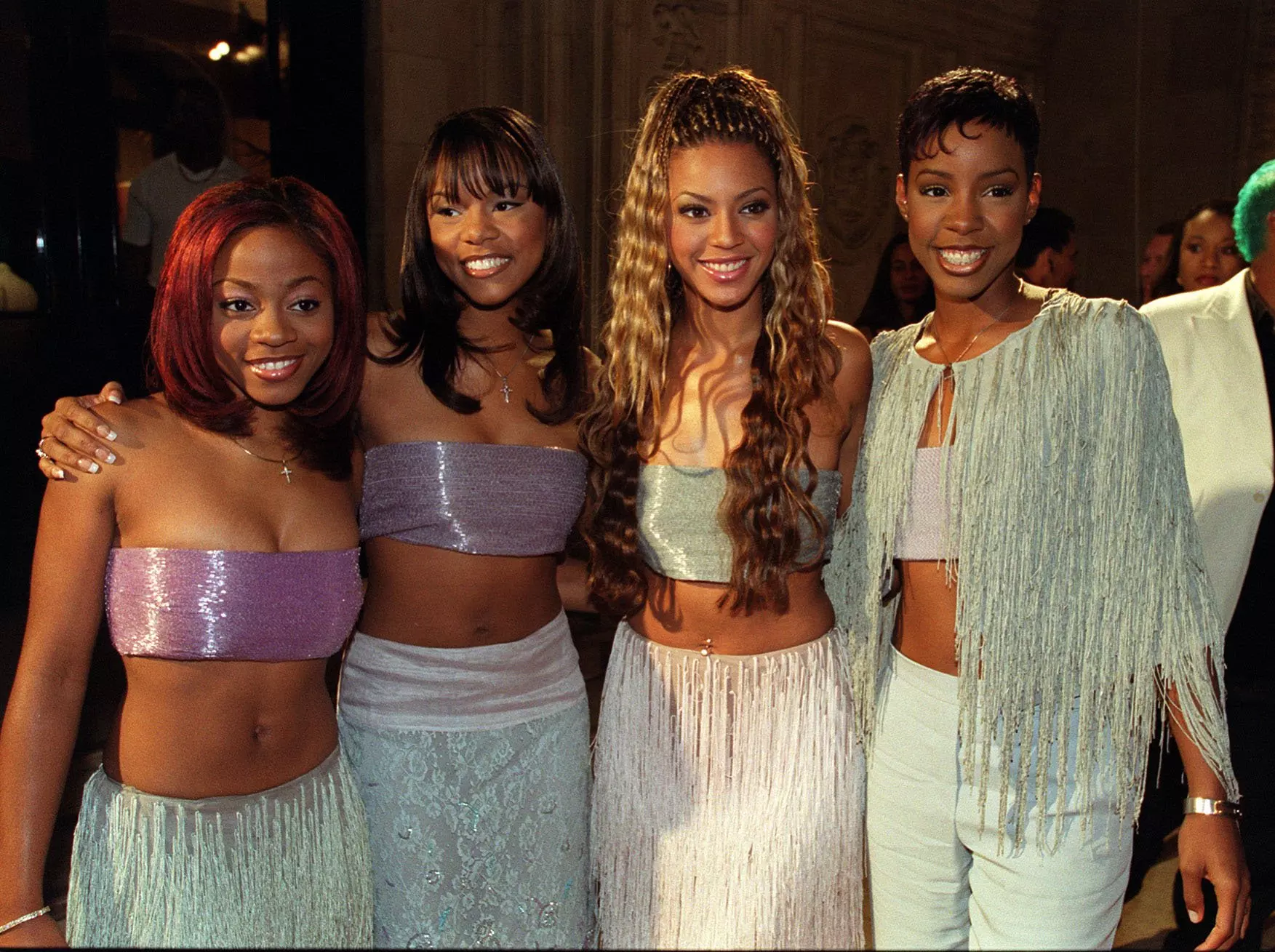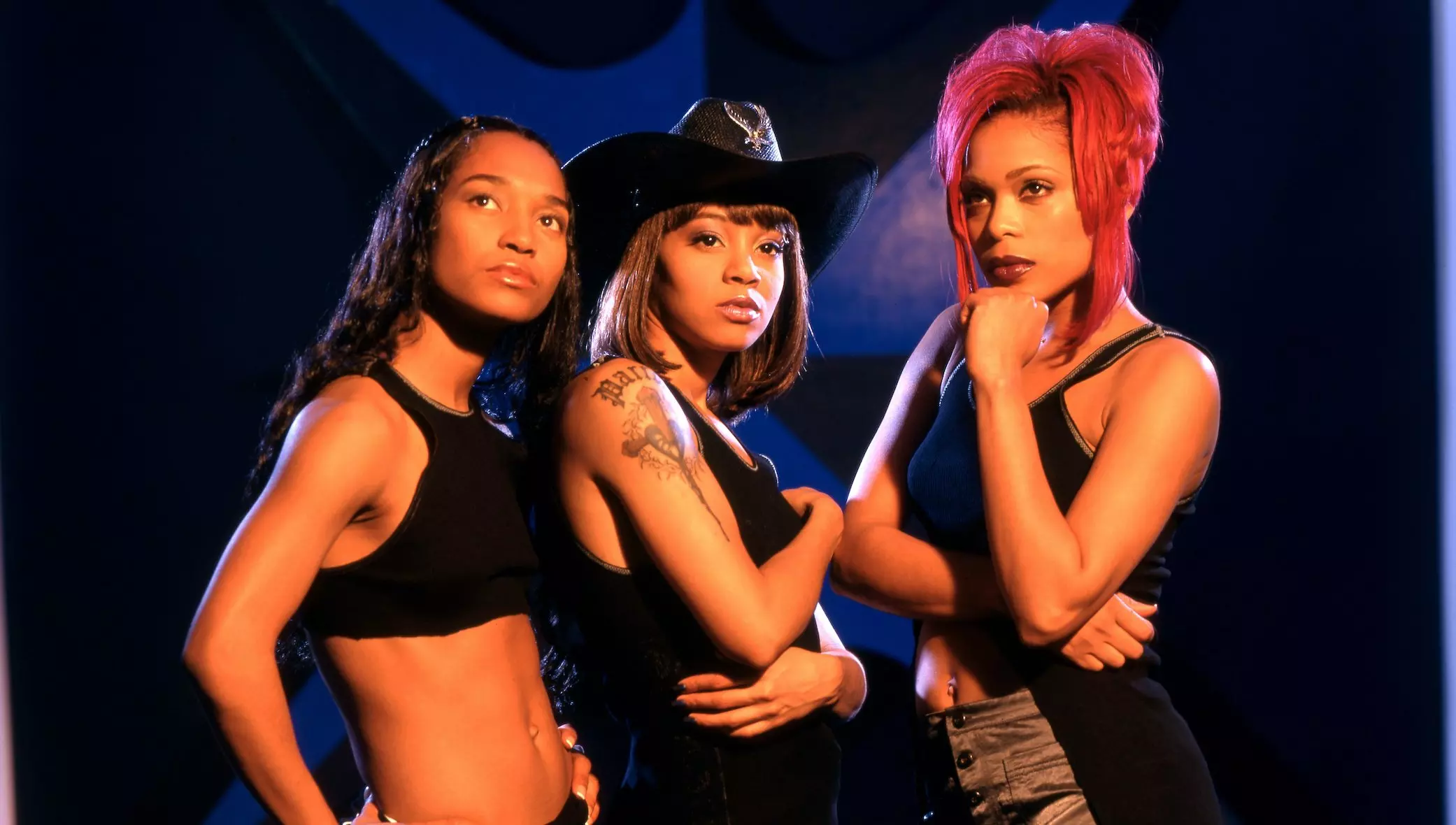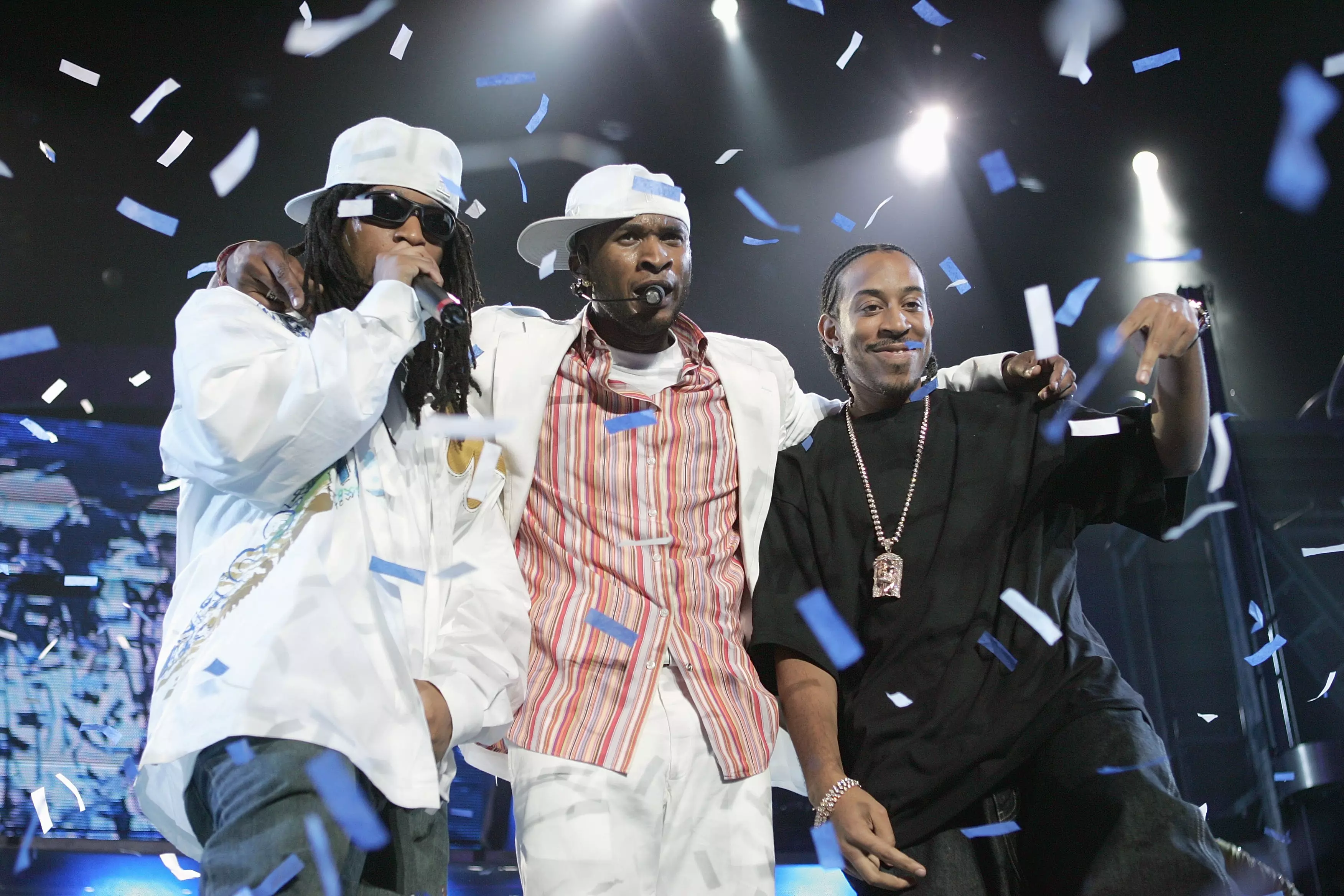Photo: Walter McBride/Getty Images
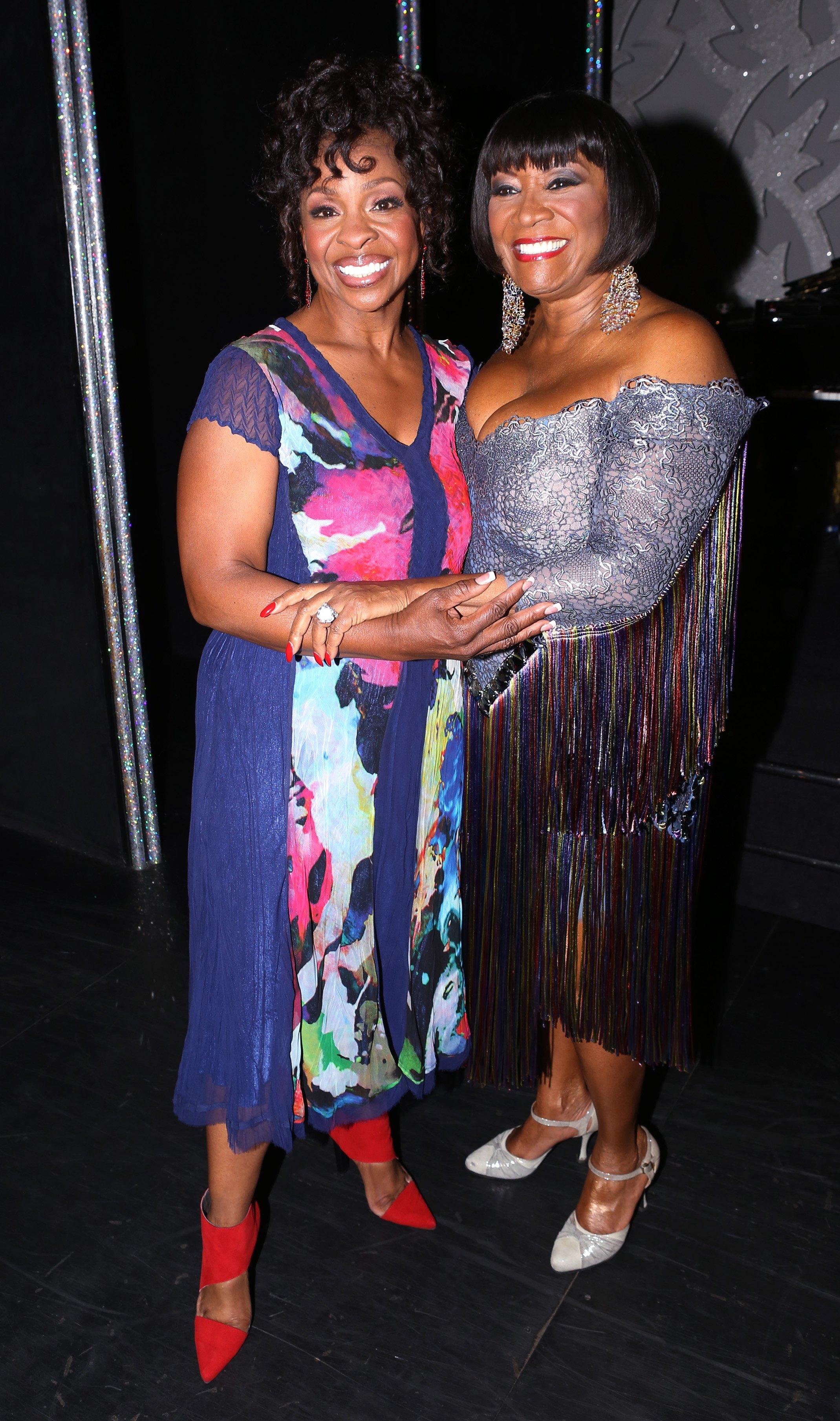
Gladys Knight & Patti LaBelle in 2014
news
Gladys Knight & Patti LaBelle's Verzuz Faceoff Was A Moment Of Pure Soul Sisterhood
"There's nothing I don't love that you might sing tonight. So, let's just get it clear, I'm ready for you honey," LaBelle said to her longtime friend and fellow R&B/soul icon
Last night (Sept. 13), GRAMMY-winning music icons Patti LaBelle and Gladys Knight brought a big serving of soul and sisterhood to the latest Verzuz faceoff. During the livestream's joyful three hours, the powerhouse pair sang 35 songs (including two renditions of "Midnight Train To Georgia") selected from their gem-filled catalogues dating back 60 years. In between the music, the two R&B/soul greats showered each other with praise and offered nuggets of wisdom, humor and shout-outs to the star-studded virtual audience, which included the likes of Oprah Winfrey and Michelle Obama.
"I love that tune," LaBelle praised after Knight's first rendition of "Midnight Train To Georgia" and just about halfway into the faceoff. "There's nothing I don't love that you might sing tonight. So, let's just get it clear, I'm ready for you honey."
The evening's rich setlist included selections from their early acts—LaBelle's fabulous girl group Labelle and Knight's family affair Gladys Knight & the Pips—as well as their longtime solo acts. This included LaBelle's "Lady Marmalade," If You Don't Know Me By Now" and "Love, Need and Want You" and Knight's "Neither One of Us (Wants to Be the First to Say Goodbye)," "Friendship Train" and "Love Overboard."
They both sang along to their songs—for the most part, joking about forgetting some of the lyrics to the older songs—with their warm voices and still-epic high notes offering comfort during these hectic times. They also sang along with each other, as this Verzuz was not a battle, but a moment for the musical powerhouses to show each other some love and appreciation. They also shared the love for their collaborators, children, viewers and the Verzuz and Apple Music team (who recently partnered with the Swizz Beatz- and Timbaland-created event). Swizzy got warm birthday wishes (he was born Sept. 13) and wow, what a great way to celebrate being alive.
After their seventh-round faceoff, where LaBelle sang "Love, Need and Want You" and Knight delivered "Someone to Watch Over Me," the pair began talking warmly about their children. Knight revealed she didn't know about Verzuz until her son Shanga called her up and encouraged her to try to get on in, which she did. "I hope you're proud of us, sons," she said. We also learned that LaBelle still has a flip phone. "I love my flip. I'm very low-key," she shared with a smile.
When they saw the Former First Lady pop up in the viewer list, or as LaBelle dubbed it "the virtual front row," they were both genuinely thrilled and sent love and praise her way. "I am so proud of her," Knight chimed in, adding, "She's a sweetheart and she's down to earth." "And she's married to the best man in the whole world," the both chimed in. "We miss you Michelle and Barack," LaBelle said.
In addition to the many notable virtual guests, there was a very special in-studio guest—Dionne Warwick, who helped close out the evening with an extra dose of sisterhood. The three musical heroes sang Warwick's "That's What Friends Are For" and their 1991 remake of Karyn White's female empowerment hit, "Superwoman."
If you missed the much-needed evening of wholesome, heartwarming and soul-stirring content, you can watch the last half or so in the YouTube video above.
From Brandy Vs. Monica To Timbaland Vs. Swizz Beatz, What's Your Favorite Verzuz Battle Matchup?
The LaBelle and Knight Verzuz follows Brandy and Monica's also-amazing showdown on Aug. 31. In addition to the huge number of viewers who tune into the streams via IGTV and Apple TV, the much-buzzed-about episodes always lead to a boost in interest in the featured artists and their music. In the case of the '90s R&B queens, their episode was watched by over 60 million viewers and they collectively logged 21.9 million U.S. streams in just the two days following. Stay tuned to Verzuz' Instagram for the data behind the Knight and LaBelle love fest, as well as for info on upcoming T.B.A. pairings. Here's to the love being showered back onto the soul queens.
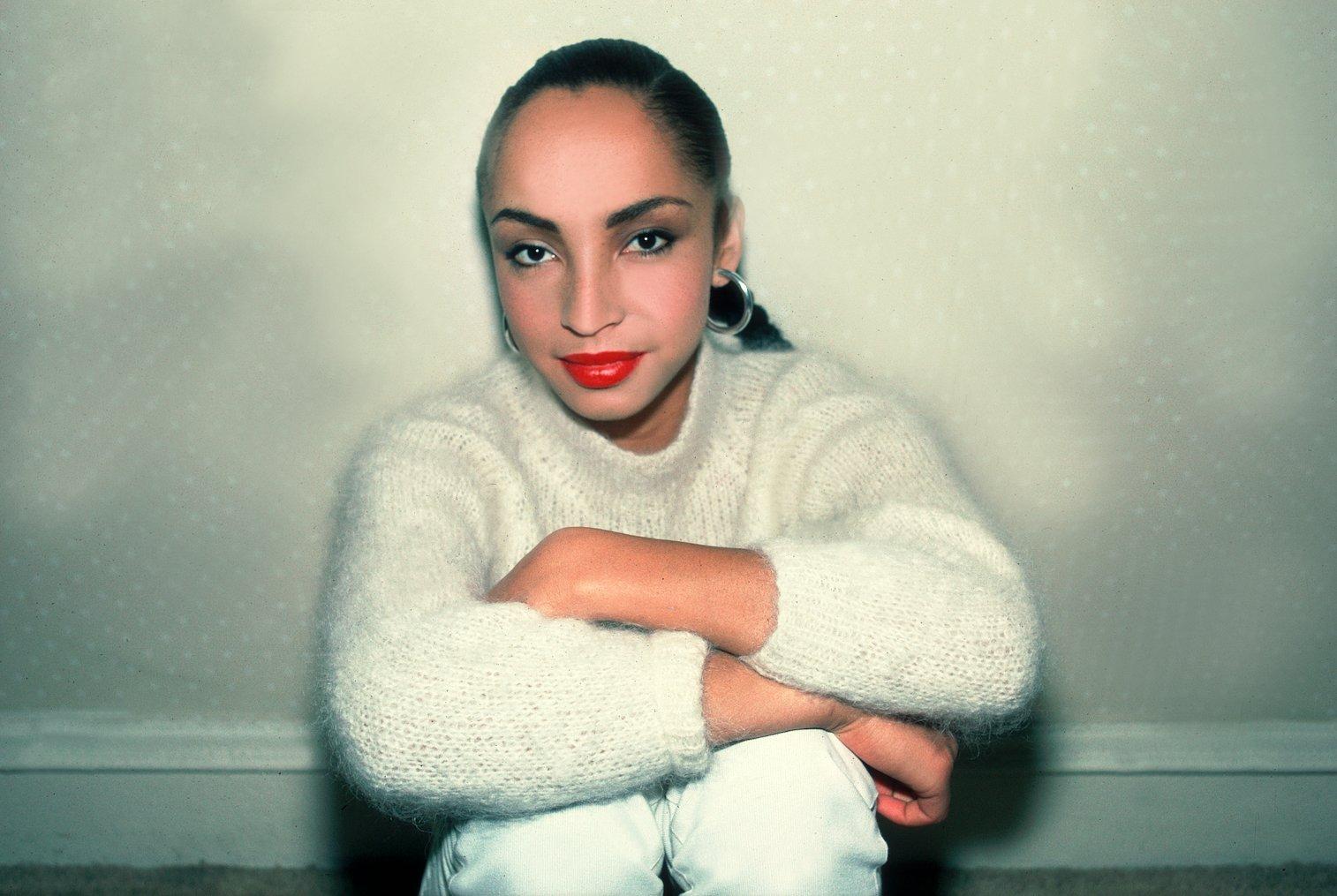
Photo: Paul Natkin/Getty Images
list
8 Ways Sade's 'Diamond Life' Album Redefined '80s Music & Influenced Culture
As Sade's masterpiece 'Diamond Life' turns 40, see how the group's debut pushed R&B forward and introduced them as beloved elusive stars.
"I only make records when I feel I have something to say," Sade Adu asserted in 2010 upon the highly anticipated release of Sade's GRAMMY-winning Soldier of Love album, which arrived after a 10-year hiatus. "I'm not interested in releasing music just for the sake of selling something. Sade is not a brand."
This lifetime of dedication toward achieving musical excellence helped Sade — vocalist Adu, bassist Paul S. Denman, keyboardist Andrew Hale, and guitarist/saxophonist Stuart Matthewman — gain prominence in the mid-80s, also garnering enormous respect from fans, critics, and peers alike. Formed in 1982, the English band is one of the few acts that can still be met with a hungry audience after disappearing from the spotlight for multiple years.
In an industry where churning out a new body of work is expected every couple of years, the four meticulous members of Sade move on their own time, putting out a mere six studio albums since 1984. Every project becomes more exquisite than the last, but it all began 40 years ago with Sade's illustrious debut album, Diamond Life. Ubiquitous hits like "Smooth Operator" and "Your Love Is King" appealed to listeners young and old — offering a unique blend of R&B, jazz, soul, funk, and pop that birthed a new sound and forced the industry to take notes from the jump.
As Sade's Diamond Life celebrates a milestone anniversary, here's a look at how the album helped push R&B forward, and why it's just as relevant today.
It Helped Set Off The "Quiet Storm" Craze
By mid-1984, Michael Jackson, was riding high off of winning the most GRAMMYs in a single night (including Album Of The Year) for his blockbuster album Thriller, Madonna celebrated her first top 10 hit with "Borderline," and Prince's Purple Rain was just days away from its theatrical release. Duran Duran, Culture Club, Billy Idol, and the Police were mainstays, while "blue-eyed soul" in particular had also hit an all-time high thanks to Hall and Oates, Wham, Simply Red, and others. What's more, many Black artists like Lionel Richie and Whitney Houston opted for more of a pop sound to appeal to broader audiences during MTV's golden era.
Diamond Life was refreshing at the time, as it fully embraced soul and R&B. The album offered a chic sophistication amid the synth-heavy pop and rock music that ruled the charts.
Singles like "Your Love Is King" and "Smooth Operator" introduced jazz elements into mainstream radio. In turn, Sade helped usher in the "quiet storm" genre — R&B music at its core, with strong undertones of jazz for an ultra-smooth sound. Sade and Diamond Life also laid some of the groundwork for neo-soul, which saw a surge in the '90s à la Lauryn Hill, Maxwell, and Erykah Badu.
It Made GRAMMY History
In the 65-year history of the GRAMMYs, a small number of Nigerian artists, including Burna Boy and Tems, have won a golden gramophone. In 1986, a then 27-year-old Sade Adu made history as the first-ever Nigerian-born artist to win a GRAMMY when she and her band was crowned Best New Artist at the 29th GRAMMYs. Still, Billy Crystal and Whoopi Goldberg had to accept the award on Sade's behalf — signaling Adu's elusive nature as she rarely attends industry events or grants interviews.
Since then, Sade has gone on to earn three more GRAMMYs, including Best Pop Vocal Album in 2001 for their fifth studio album, Lovers Rock. The win signified their staying power in the new millennium.
It Birthed The Band's Signature Song…
While Diamond Life spawned timeless hits like "Your Love Is King" and "Hang On to Your Love," "Smooth Operator" became the album's highest-charting single — and remains the most iconic song in their catalog. The seductive track about a cunning two-timer propelled the band into international stardom: "Smooth Operator" skyrocketed to No. 5 on the Billboard Hot 100 and hit No. 1 on the Adult Contemporary chart.
Even non-Sade fans can identify "Smooth Operator" in an instant, from Adu's unmistakable vocals to that now-iconic instrumental saxophone solo. As of press time, it boasts over 400 million Spotify streams alone, and has remained a set list staple across every one of Sade's tours.
…And It Houses Underrated Gems
"Smooth Operator" may be Sade's commercial classic, but deep cuts like "Frankie's First Affair," "Cherry Pie," and "I Will Be Your Friend" are fan favorites that embody the band's heart and soul.
"Frankie's First Affair" offers a surprisingly enchanting take on infidelity: "Frankie, didn't I tell you, you've got the world in the palm of your hand/ Frankie, didn't I tell you they're running at your command." And, it's impossible to resist the funky groove that carries standout track "Cherry Pie," which served as a catalyst for some of Sade's later, more dance-oriented hits, including "Never As Good As the First Time" and "Paradise." Some of Sade's most poignant statements about lost love, including "Somebody Already Broke My Heart" from 2000's Lovers Rock, can be traced back to "Cherry Pie."
Diamond Life's penultimate song, "I Will Be Your Friend," offers both solace and companionship — another recurring theme throughout Sade's music, from 1988's "Keep Looking" to 2010's "In Another Time."
It Was The Best-Selling Debut Album By A British Female Singer For More Than Two Decades
Sade has sold tens of millions of albums worldwide, but Diamond Life remains the band's most commercially successful LP with over 7 million copies sold. Most of Sade's other platinum-selling LPs, including Diamond Life's follow-up, 1985's Promise, boast sales between four and six million copies.
The 7 million feat helped Sade set the record for best-selling debut album by a British female singer. She held the title for nearly 25 years until Leona Lewis' 2008 album Spirit, which has sold over 8 million copies globally.
It Introduced Sade Adu As A Style Icon
When we first met Adu, her signature aesthetic consisted of a long, slicked-back ponytail, red lip, and gold hoops. Sade's impeccable style is front and center in early videos like "When Am I Going to Make a Living," in which she sports an all-white ensemble paired with a pale gray, ankle-length trench coat and loafers.
Adu rocked the model off-duty style long before it became a trend. Her oversized blazers, classic trousers, and head-to-toe denim looks were as effortless as they were chic and runway-ready — proving that less was more amid the decade of excess.
"It's now so acceptable to be wacky and have hair that goes in 101 directions and has several colours, and trendy, wacky clothes have become so acceptable that they're… conventional," Adu, who briefly worked as a fashion designer and model before pursuing music, told Rolling Stone in 1985. "I don't like looking outrageous. I don't want to look like everybody else."
It Shined A Light On Larger Societal Issues
While most of Diamond Life leans into love's ebbs and flows, a handful of tunes deal with financial strife coupled with a dose of optimism, as evidenced by "When Am I Going to Make a Living" and "Sally." The latter song characterizes the Salvation Army as a young charitable woman: "So put your hands together for Sally/ She's the one who cared for him/ Put your hands together for Sally/ She was there when his luck was running thin."
Meanwhile, Adu, a then-starving artist, scribbled down portions of "When Am I Going to Make a Living" on the back of her cleaning ticket. The soul-stirring "We are hungry, but we won't give in" refrain emerges as a powerful mantra in the face of adversity and still holds relevance in 2024. Similar themes appear throughout Sade's later work, including unemployment ("Feel No Pain"), unwanted pregnancy ("Tar Baby"), survival ("Jezebel"), prejudice ("Immigrant"), and injustice ("Slave Song").
Diamond Life closer "Why Can't We Live Together" is a well-done cover of Timmy Thomas' 1972 hit about the staggering Vietnam War deaths. The band wisely doesn't veer too far from the original recording, but Adu's distinctive contralto voice brings a haunting quality that's reminiscent of Billie Holiday.
It Ignited The Public's Ongoing Fascination With Sade Adu
Since 1984, Sade has only released six studio albums, and a remarkable 14 years have passed since the group's last offering, 2010's Soldier of Love. Ironically, that scarcity — both in terms of music and access to the artist — has actually added to Adu's appeal. Case in point: Sade's sold-out Soldier of Love Tour grossed over $50 million in 2011, and the band still brings in close to 14 million monthly listeners on Spotify.
Adu's striking beauty, mysterious persona, and knack for letting her music do all the talking has earned the admiration of her peers across genres and generations. Everyone from Beyoncé to Kanye West to Snoop Dogg have sung her praises. Drake even has two portrait-style tattoos of the singer on his torso. Prince reportedly described 1988's "Love Is Stronger Than Pride" as "one of the most beautiful songs ever." Metalheads Chino Moreno of the Deftones and Greg Puciato of the Dillinger Escape Plan have also cited Adu as inspiration — showing that her influence runs far and wide.
In 2022, reports circulated that Sade was recording new music at Miraval Studios in France. But upon Diamond Life's 40th anniversary, "Flower of the Universe" and "The Big Unknown" from the respective soundtracks to 2018 films A Wrinkle in Time and Widows stand as Sade's latest releases.
Whether fans get new music anytime soon remains to be seen, but the impressive repertoire of Adu, Denman, Hale, and Matthewman is one that aims to be truth-seeking and inspiring while exploring life's peaks and valleys. Diamond Life in particular holds up as one of the purest representations of the group's creative legacy, both commercially and musically.
From quadruple platinum status to resonating with several generations, Diamond Life will forever stand as a remarkable debut — one that continues to influence music in a multitude of ways.
Latest News & Exclusive Videos

2024 Paris Olympics Opening Ceremony: Watch Celine Dion, Lady Gaga, Gojira & More Perform

Ice Spice Is The Drill Queen On 'Y2K!': 5 Takeaways From Her Debut Album

New Music Friday: Listen To New Songs From Halsey, MGK And Jelly Roll, XG & More

Watch Young MC Win Best Rap Performance In 1990

The Red Clay Strays Offer A New Kind Of Religion With 'Made By These Moments'
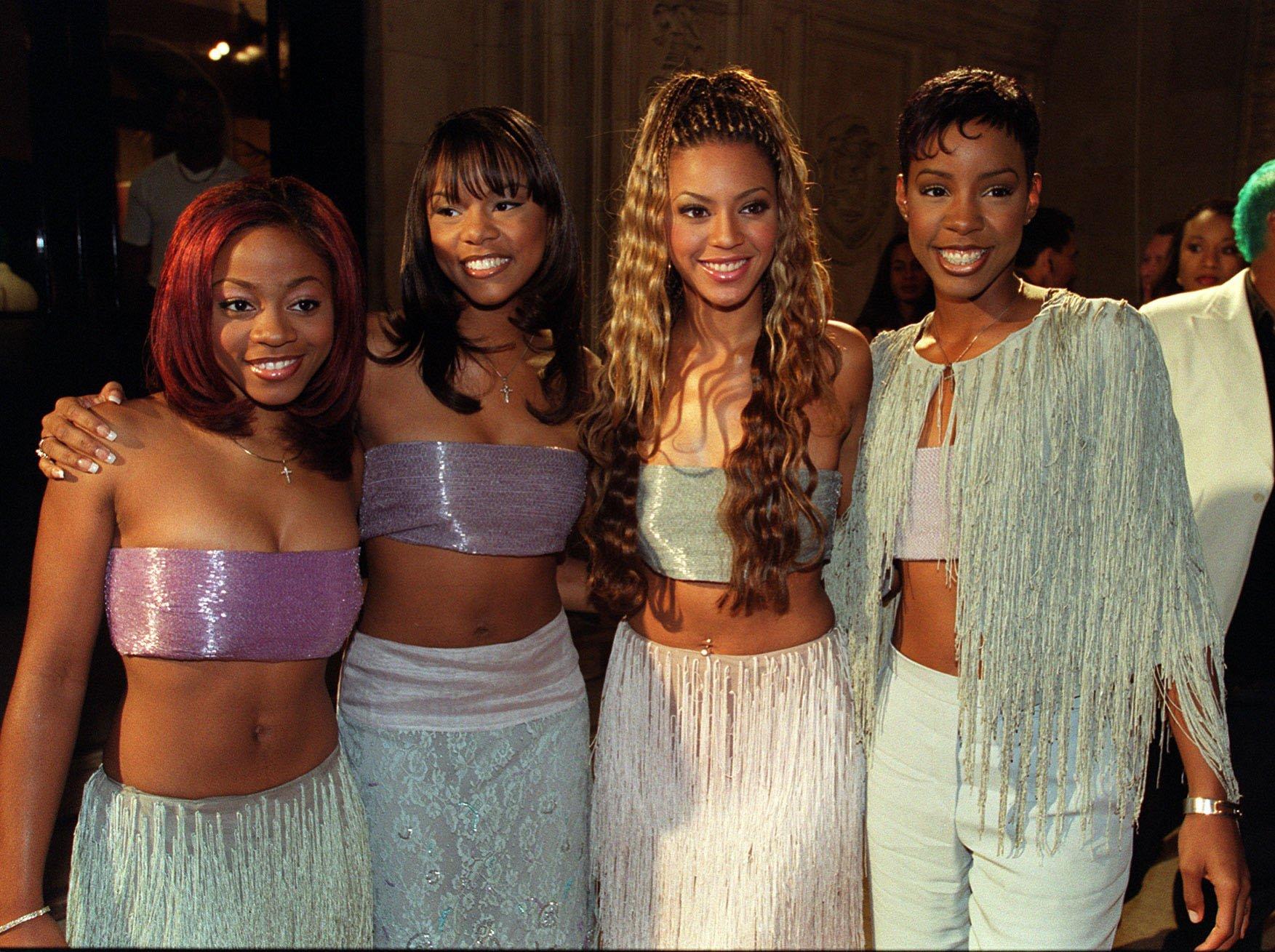
Photo: Michael Crabtree - PA Images/PA Images via Getty Images
list
5 Reasons Why 'The Writing's On The Wall' Is Destiny's Child's Defining Album
From its embrace of experimental R&B production and memorable music videos, to its GRAMMY-winning empowering songs, 'The Writing’s On the Wall' remains a touchstone for fans of Destiny's Child.
In 1997, all-female R&B groups were thriving: TLC already had seven Top 10 hits on the Billboard Hot 100, En Vogue had numerous platinum singles, and Xscape reached No. 1 more than once. Soon, a quartet of teenagers would burst upon the scene and leave an indelible impact.
While Destiny’s Child are now canonical in the world of '90s and early aughts R&B, the group initially experienced spotty success. Their 1997 debut single, "No, No, No (Part 2)" peaked at No. 3 on Billboard’s Hot 100 and was certified platinum. Yet their eponymous album, released in February 1998, only hit No. 67. Their follow up single, "With Me," also failed to set the charts ablaze.
Destiny’s Child's underwhelming chart performances could’ve easily derailed the budding group. Fortunately, the four ambitious girls from Texas had other plans.
Beyoncé Knowles, Kelly Rowland, LaTavia Roberson, and Le Toya Luckett were determined not to become one hit wonders, and quickly went back into the studio to record their sophomore album. Released on July 14, 1999, The Writing’s On the Wall became Destiny’s Child’s highest selling album and spawned some of their most iconic songs — one of which led to the group's first GRAMMY win. Not only did the album establish Destiny's Child as a household name, but it fine tuned the R&B girl group concept to perfection.
"We had no idea that The Writing's on the Wall would be as big a record as it was. Especially worldwide," Beyoncé said in a 2006 Guardian interview.
In celebration of the iconic album's 25th anniversary, read on for five reasons why The Writing’s On the Wall is the defining album of Destiny’s Child’s career.
Its Members Took Creative Control
On their debut album, Destiny’s Child tapped into the neo soul trend popularized by the likes of D’Angelo, Erykah Badu, and Maxwell — artists in their early-to-mid twenties with a maturity the teen quartet didn’t yet have. The references and creative direction clashed with the reality of the group members being so young.
"It was a neo-soul record and we were 15 years old. It was way too mature for us," Beyoncé tol the Guardian.
Heading back into the studio, the girls made sure to eradicate any misalignments and put more of themselves into their sophomore album. In an interview with MTV, the members said The Writing’s On the Wall had a fresher, more youthful vibe because "it comes from us." The quartet's fingerprints are all over the 16 track album: Each member co-wrote at least 50 percent of the album.
"Even at the time, Beyoncé would produce a lot of their background vocals, and she was a leader even at a young age," Xscape's Kandi Burruss said in a Vice interview, reflecting on her work as a songwriter and producer on The Writing's On the Wall. This heightened presence enabled the group to develop lyrics that boldly reflected their opinions and youthful energy. In turn, The Writing's On the Wall netted a run of iconic hit singles.
Read more: Destiny's Child's Debut Album At 25: How A Neo-Soul Album From Teens Spawned R&B Legends
It Pushed R&B Forward
Like its predecessor, The Writing’s On the Wall is very much an R&B album. However, Beyoncé's father Mathew Knowles — who still managed the group at the time — brought in producers who weren’t afraid to experiment. The result was a more commercial album that fused classic R&B with pop influences, creating a sound that was simultaneously contemporary and timeless.
Kevin "She'kspere" Briggs and Burrus (who would go on to co-write and produce TLC’s "No Scrubs") contributed to five of the album's tracks, shaping its overall sound and differentiating it from Destiny’s Child. The duo kept a few elements from the group’s debut effort, including the sing-rapping heard on "Bug A Boo" and "Hey Ladies." With syncopated beats, thumping basslines, and their knack for writing catchy hooks, Briggs and Burrus created R&B records with the perfect blend of chart-friendly accessibility.
On the Missy Elliott produced "Confessions," synthesizers, drum machines, and electronic garbling were layered to create a lush, futuristic backdrop. Further subverting the classic R&B ballad, Elliott paired what sounds like a cabasa to match Beyonce’s cadence throughout the verses which gives her laidback vocals an almost robotic feel. In addition to producing, Elliott’s velvety vocals also appear quite prominently on the chorus, adding to the track’s sonic tapestry.
GRAMMY-winner Rodney Jerkins was tapped to produce "Say My Name." The original beat Jerkins used was two-step garage, a subgenre of UK garage. No one else liked the sound, so he completely revamped the track into the GRAMMY-winning anthem we know today. Jerkins melded funk-inspired guitar and a call and response approach, then modernized them with a shimmery, polished production. This helped "Say My Name" become the group’s most listened to song on Spotify with over 840 million streams. Jerkins has even gone on record to say this is his favorite song he’s produced to date.
Read more: "Say My Name" 20 Years Later: Why The Destiny's Child Staple Is Still On Everyone's Lips
Its Music Videos Praised Black Culture
"For me, it is about amplifying the beauty in all of us," Beyoncé said in a 2019 interview with Elle when asked about the importance of representation. Even before her solo work, the importance of spotlighting Black culture was evident in Destiny's Child's music videos.
In "Bills, Bills, Bills," we see the group play the role of hair stylists in a salon which is an obvious nod to Beyoncé's mother’s longstanding relationship with all things hair. Near the end of "Bug a Boo," the members change into their version of majorette costumes and dance in front of a marching band. Majorettes and marching bands have a vibrant legacy within HBCUs; almost 20 years after this video premiered, Beyoncé revisited this very concept for her 2018 Coachella performance.
It Delivered Mainstream Success
The Writing’s On the Wall was a hit across the charts. The group earned their first No. 1 singles on Billboard’s Hot 100 with "Bills, Bills, Bills" and "Say My Name." Promotions for the latter also reinvigorated album sales and helped shift another 157,000 copies (an impressive 15 percent increase from their first-week sales). The fourth and final single, "Jumpin’, Jumpin’" was released during the summer of 2000 and became one of the most played songs on the radio that year.
Songs from the album were nominated at both the 42nd and 43rd GRAMMY Awards. Destiny’s Child took home their first golden gramophone at the 2001 GRAMMYs, winning Best R&B Performance by a Duo or Group with Vocals for "Say My Name." The single also won Best R&B Song and was nominated for Record Of The Year.
With 14 nominations, Destiny’s Child remain the most nominated girl group in GRAMMY history. With worldwide sales of 13 million, The Writing’s On the Wall is also the fourth best-selling girl group album of all time.
It Expanded The Concept Of "Girl Power"
The Writing’s On the Wall was much more than catchy, radio-friendly tunes. Lyrically and in production, the album reintroduced Destiny’s Child as the architects for their own lives. The tongue-in-cheek Godfather-inspired intro tees up each song with a commandment for their partners and, at times, for themselves.
Often misconstrued as a gold digger anthem,"Bills, Bills, Bills" empowers a woman to confront a lover who's financially taking advantage of her. This is a far cry from the theme of a young woman focused on finding love — a common theme on Destiny's Child — and puts their confidence on full display. "So Good" is a sassy, uplifting anthem which explicitly addresses haters with pointed lyrics like "For all the people ‘round us that have been negative/Look at us now/See how we live." Destiny's Child was sending a clear message: they’re going to be fine regardless of what others say.
And when the group became tabloid fodder due to unexpected lineup changes, "So Good" took on a new meaning for persevering through hard times. While there are some songs with morally questionable lyrics — we’re looking at you ‘"Confessions" — the consistent message of embracing one’s self-worth and independence is clear.
More Girl Group Sounds & History
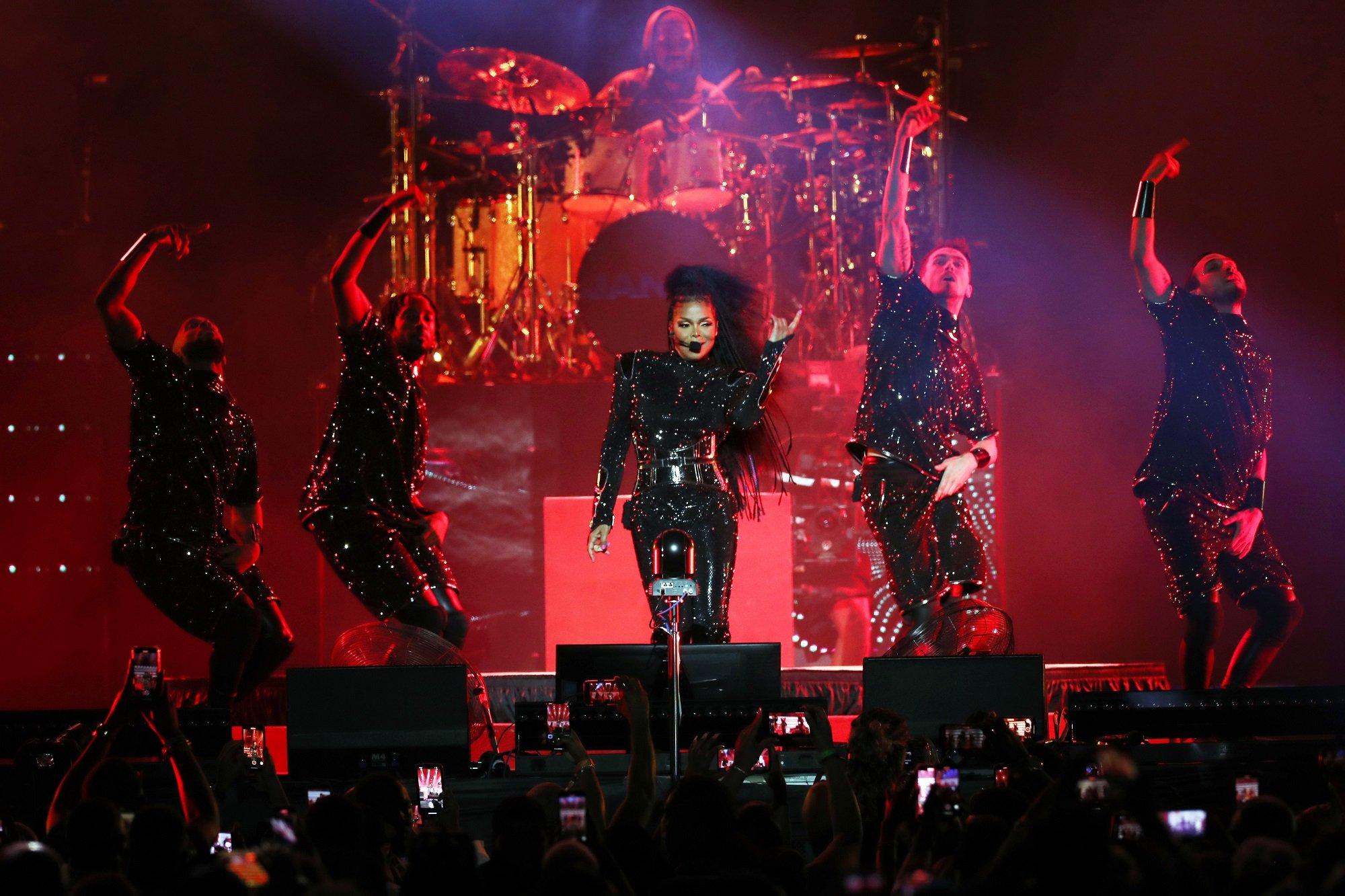
Photo Credit: Bennett Raglin/Getty Images for Essence
interview
Celebrating 30 Years Of Essence Fest: How New Orleans & Multi-Generational, Diasporic Talent Create The "Super Bowl Of Culture"
Ahead of the 30th Essence Festival Of Culture, held July 4-7 in New Orleans, GRAMMY.com spoke with executives and curators of the legendary celebration of Black excellence.
Every July, millions of Black people, specifically Black women, descend upon New Orleans for the Essence Festival of Culture (EFOC). Known for many years as the Essence Festival, the festival is a celebration of Black culture, community, and heritage. Since its inception in 1995 as a one-off event to commemorate the publication’s 25th anniversary, the festival has evolved into a diasporic jubilee, drawing in people of African descent from across the diaspora.
In addition to its global presence, the festival pours millions of dollars into the local New Orleans community, which has served as the festival's home for 30 years (with the exception of 2006, when the festival was held in Houston, because of Hurricane Katrina). In 2020, the festival was canceled because of the COVID-19 pandemic. Despite this, the annual festival continues to be one of the most sought-after and attended festivals in the United States.
This year’s Essence Festival of Culture will be held at the Superdome from July 4-7, replete with legendary and fast-rising talents. On July 5, Birdman & Friends will celebrate the 30th anniversary of Cash Money Records. The following day will feature a special performance by Charlie Wilson, while Usher will commemorate the 20th anniversary of Confessions.
Janet Jackson and Victoria Monét will headline the festival's final night, while Frankie Beverly and Maze close out the festival with the return of All-White Night. Other performers include The Roots featuring Mickey Guyton, Ari Lennox and T-Pain, Busta Rhymes, Raphael Saadiq, D-Nice featuring Shelia E, Big Boi, and many more.
Read more: Music Festivals 2024 Guide: Lineups & Dates For Lollapalooza, Coachella, Bonnaroo & Much More
EFOC has been compared to SXSW, Coachella, Austin City Limits, and other notable festivals, yet it stands out for its empowerment-centered approach. It is not simply a festival, it is a family reunion. The one festival in the United States that does not pander to or take advantage of Black audiences, but truly celebrates them and their achievements. Although music has always been an integral part of the festival’s ethos — Aretha Franklin and B.B. King performed at the first iteration — the festival excels in its multi-generational and interdisciplinary programming. On any given day, attendees can attend sessions on Black entrepreneurship, politics, mental health, and literature, as well as seminars focused on issues impacting the Black community.
There’s a reason why the festival is referred to as the party with a purpose. For decades, it has operated as a celebratory convening place for Black people, Black families, and Black communities. Now, more than ever, spaces like EFOC are needed, as the Black community experiences an onslaught of changes — from Historically Black Colleges and Universities in North Carolina and Tennessee being subject to intense government oversight, to Black women-owned venture capital firms being targeted by conservatives, and Black voting rights becoming at risk during an election year.
Ahead of the festival’s 30th celebration, Michael Barclay, Executive Vice President of Experiential for ESSENCE Ventures and Barkue Tubman Zawolo, Chief of Staff, Talent and Diasporic Engagement for Essence Ventures, spoke to the Recording Academy about the history, legacy, and future of the Essence Festival of Culture.
This interview has been edited for clarity.
Are you part of the generation that grew up with the Essence Festival of Culture? If so, how does it feel to be a part of it?
Barkue Tubman Zawolo: I'm originally from Liberia. And even being in Liberia, prior to my family moving to the U.S. in 1980, Essence was always a thing for my mom and my aunts. When we came here, fast forward to me, as an adult, [after] graduating college, I got into the music industry. I've managed artists that have gone through the Essence stages and pages in different ways.
Essence Fest has always been something that we were familiar with. I have to say, I had not really experienced Essence Fest until 2019 when Essence was actually a client. One of the things that I was doing [at that point] was integrating the Diaspora and African creatives within the festival in fashion and music.
To be in the role that I'm in right now and to be on a team with people who have been a part of Essence for a long time…. Essence seems to be ingrained in all of our fabric. [What] started as a music festival now is the Super Bowl of Culture that is the Essence Festival of Culture. To be on the team that helps bring this to life for our community is a daunting but rewarding task all in the same.
Essence is something that I don't think anybody in our community takes lightly. Even our partners understand the value of it. We certainly understand that we serve the Essence-inverse and, and we are in service to this community. It is a huge honor to be able to be a part of the team that brings this to life and, and, and constantly hear what it means to the community globally too.
One thing that I admired, especially about last year's festival, was GU Kickback — a music event hosted by Girls United, the publication’s Gen Z vertical. I saw a number of local artists from New Orleans, such as 504ICYGRL. ESSENCE just released a series of cover stories celebrating the 30 year relationship between the publication and New Orleans; how do you highlight the city and their history?
Michael Barclay: As somebody who's worked in experiential, creating gatherings and experiences for almost 25 years now, the venue is always important when you're trying to set the box where you are creating for your community, for your audience. New Orleans has been that backdrop for us for almost 30 years now.
New Orleans is the convergence of our mission, our brand, in a city that is perfectly matched for that energy. New Orleans is as much a part of Essence Festival of Culture as Essence Magazine is to Essence Festival.
It is very much a partnership that has created this cultural movement. To be more inclusive, and highlight more of those local relationships and talent is very intentional. It has been something that we have put a lot of energy and effort into over the last couple of years.
This will be my third festival this year. I think Barkue, you started maybe a year or two before me. We're a fairly new crew that is working to help grow and reshape and solidify those relationships. Even with how we handle the management of the festival.
Our VP of Essence Festival, Hakeem Holmes is a hometown boy from New Orleans. He's the pride and joy. They love to see him coming. He's always enlightening us on the things that we need to be focused on for the city and how we make the best partnership and make the best impact on the area.
It was intentional what you saw last year. It's intentional this year. We dedicated our entire festival edition of the magazine as a love letter to New Orleans. It's a symbiotic relationship that is one of the key reasons why this festival is the Super Bowl of Culture.
I would love to hear about the talent aspect of the festival. Last year, Megan Thee Stallion headlined. In previous years, Beyoncé and Prince have served as headliners. What is the formula between balancing local talent, national talent and diasporic talent at the festival?
Zawolo: As we grow the festival, the intentionality becomes even more and more important. And, what we do in understanding where we are as a brand.
We're 30 years into the festival, the brand is 55 years. What's traditionally known as the Essence Woman is now bringing her daughter. It's multi-generational. We also know that the world is as big as your cell phone, so people are now exposed to different types of content and music.
We see the influence of Afrobeats and Caribbean music. We are intentional about making sure that every night really speaks to multiple generations, but it's anchored in a generation. It's like, who's bringing, who to the concert on Friday? Is it the daughter bringing her mama?
It's anchored in that younger demo, but we're going to make sure that they're going to have a collective good time there. Saturday is usually our heaviest night. We have our living legends that show up there; that really cuts across generations. This is anybody can bring anybody, but let me tell you, you're going to be able to teach each other, connect with each other with the different groupings of talent that we have.
We try to make sure that there is something that speaks to us, but that that connects with the diaspora on as many nights as possible. Sometimes it's not because they're from a different country, but because we know the music also resonates.
If you think of Janet Jackson, you can go anywhere in the world. She can check off that box, although she's not from there. You can create those ties, but we also are intentional about having Ayra Starr and Machel Montano. Last year we had Tems and Wizkid. The goal is to continue to grow what that looks like, because we are a global brand and that is our diasporic and global intent in connecting the global Black community is really important.
We are intentionally multi-generational. We intentionally lead into where a multitude of generational communities can come together and have fun together. There is something for everybody. We have a unique opportunity with Essence as the brand grows to be able to not only speak to what they want to call the aunties, I call the punties. I also think that this is where we get to educate the next generation on where we're coming from. We also get to learn from them on where they are and where they want to go.
What a beautiful way to kind of tie all of these connections. Last year, the festival celebrated 50 years of hip-hop; this year you're celebrating the 30th anniversary of the festival. What is the intention behind this year’s music programming?
Zawolo: Paying homage to people who had done some historical things on our stages. We have Janet [Jackson] back. People are like, “Oh, we saw Janet two years ago,” but Janet is also one of the highest sellers in the festival's history.
If we're going to celebrate, let's celebrate, because we know Janet never disappoints. We also want to lean into some of the [older] talent, like Charlie Wilson, Uncle Charlie. He's graced that stage so many times, but yet it's still very relevant. Using this moment to reignite things that we've done in the past and bring them back to life that we know the audience missed.
Frankie Beverly, who is going to come, this is probably going to really be his last performance. The passing of the torch. This year was about having to be intentional about what other milestones are happening that are important to this culture. Cash Money is also celebrating 30 years. Who better, right?
Essence has been in New Orleans for 30 years. Cash Money and crew are from New Orleans. Juvenile just got the key to the city from the mayor. We want to honor and celebrate him, but we also want to recognize the influence that this group of very creative, entrepreneurial, rappers and artists have had on culture, because there was a time where we all were backing that ass up.
Making sure we highlighted milestones, connecting with people who have historically been a part of making history with us, introducing some new ones — that's what we have to do. We have to set up now for the next 30 years. We want to go to the soul of what appeals to our audience, and we're really all about good music.
I think the 30th year just continues to do what we do. As we look to grow and connect demos, Megan Thee Stallion is a very viable option because again, the daughter now is going to bring the mama. Intergenerational diasporic and connecting demos, I think that only happens at the Superdome. That's also happening in the convention center, which I believe is honestly the soul of the festival.
What are your hopes and aspirations for the next 30 years of the Essence Festival of Culture? Will Essence Fest always be in New Orleans? Are we going to have an Essence Fest in Lagos, Nigeria?
Barclay: Being on this side of [EFOC], seeing the true impact of the festival and how it impacts the communities, how it impacts the folks that come to New Orleans, and now, because we've expanded to our virtual audience, the 1.7 million that are viewing around the world, my hope for the festival is that we continue to show up where our community needs us.
We're going to be in New Orleans. We're going to be in our official world as we call it. If you can't make it to New Orleans, you can tune into Essence.com and you can see what's going on there. We are creating virtual experiences, AR experiences, VR experiences, all those things, so really keeping up with the way that people continue to connect with each other, whether they're physically in the same place or halfway across the world.
I think that type of innovation is what I want to continue to see us do and allow us to create that joy that we generate in New Orleans and wherever it's needed for our community.
PRIDE & Black Music Month: Celebrating LGBTQIA+ & Black Voices
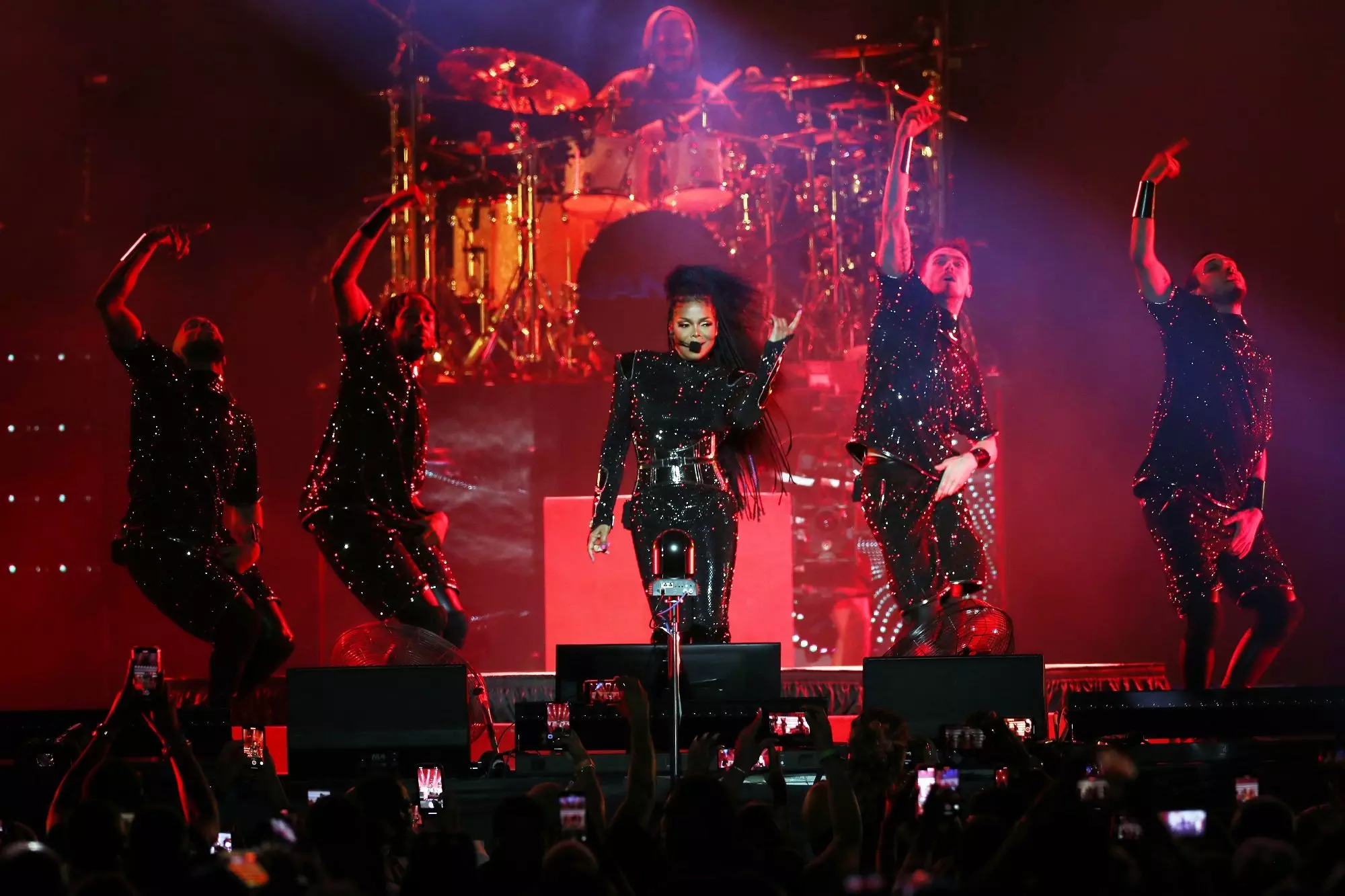
Celebrating 30 Years Of Essence Fest: How New Orleans & Multi-Generational, Diasporic Talent Create The "Super Bowl Of Culture"
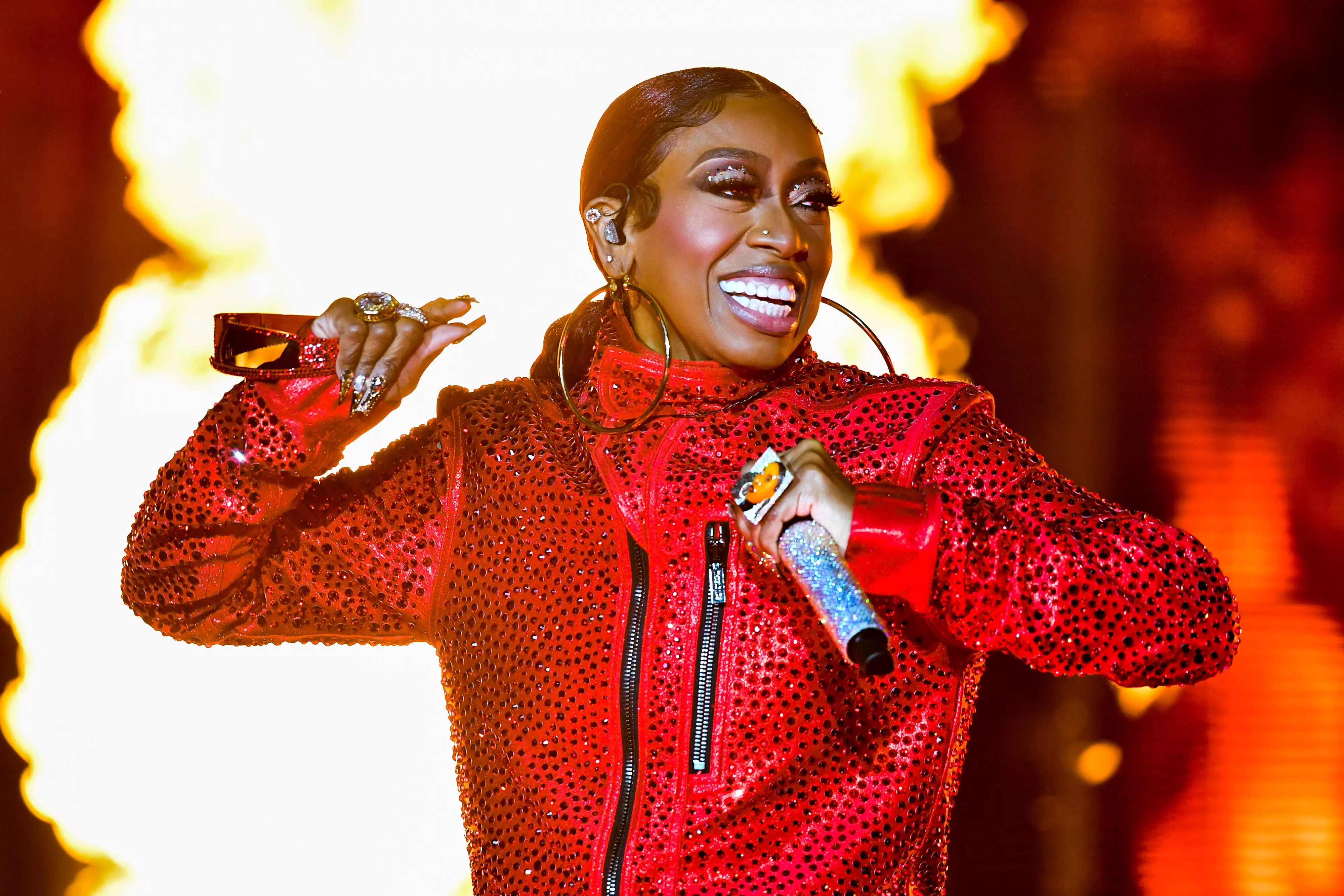
Celebrating Missy Elliott: How The Icon Changed The Sound, Look & Language Of Hip-Hop
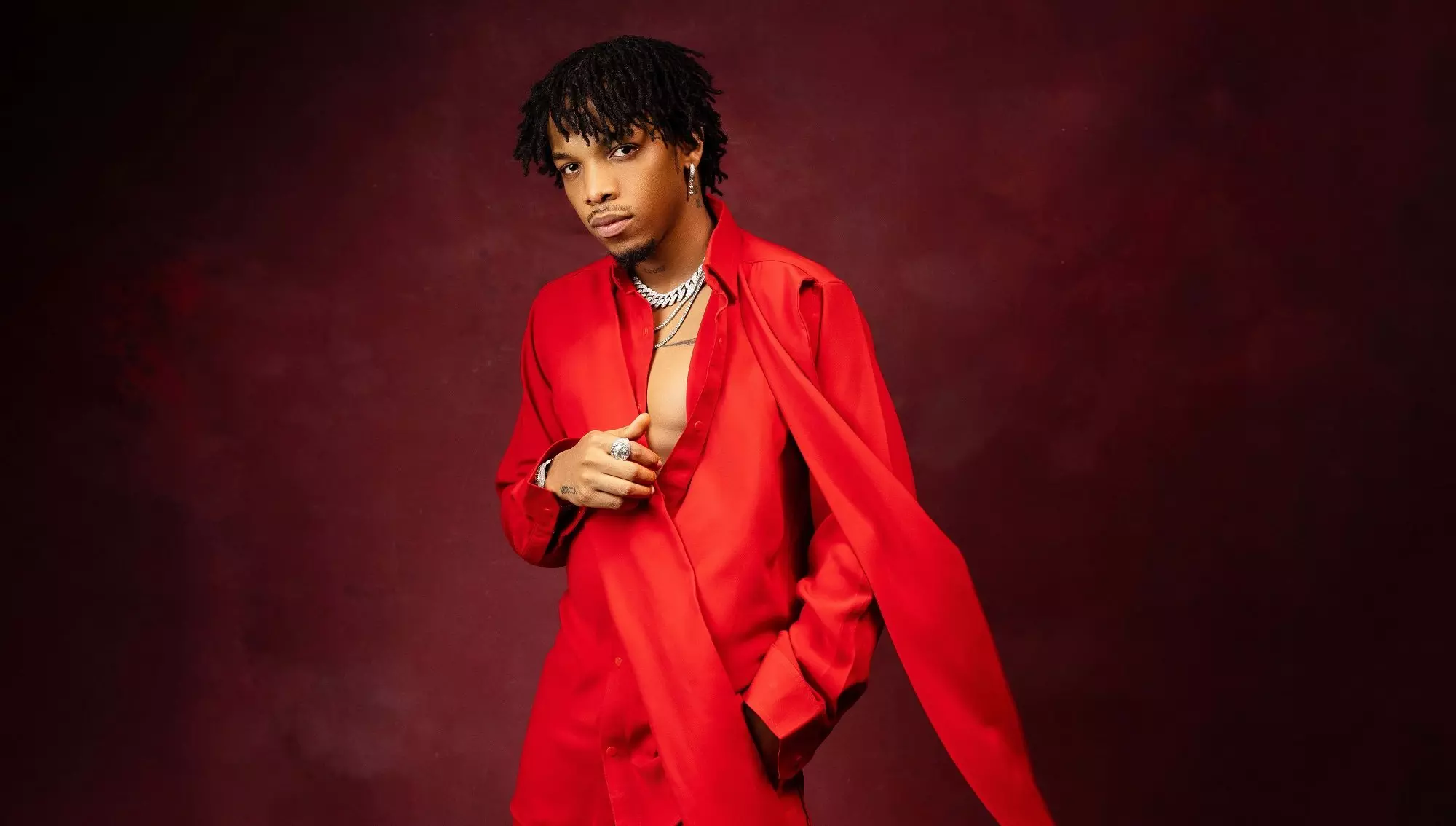
Tekno Talks New Music, Touring America & His "Elden Ring" Obsession

5 LGBTQIA+ Record Labels To Check Out: Get Better Records, So Fierce! And Others
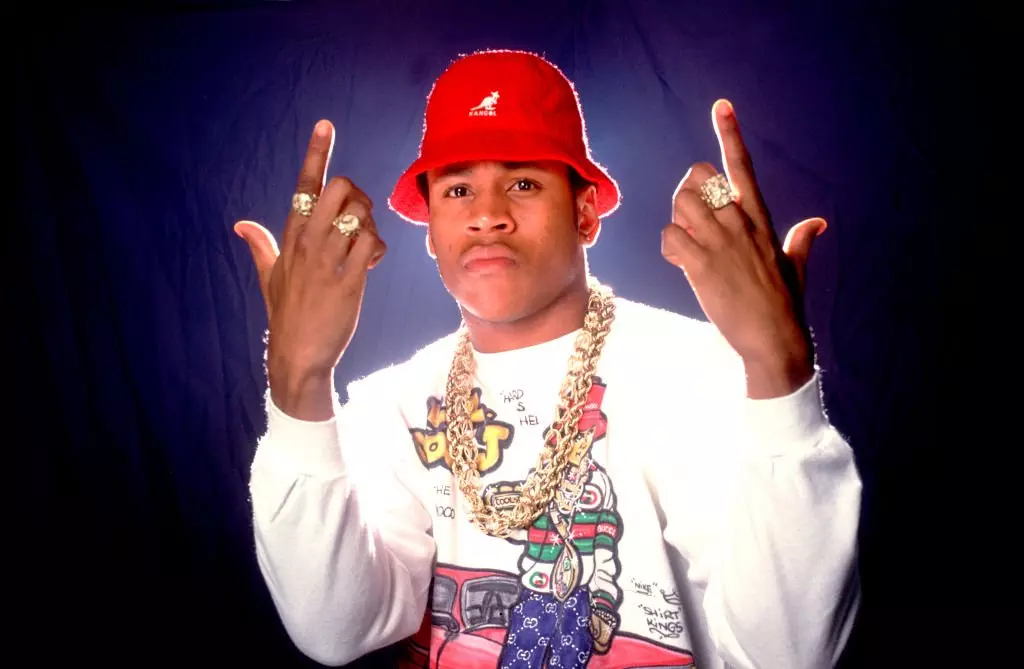
Celebrate 40 Years Of Def Jam With 15 Albums That Show Its Influence & Legacy
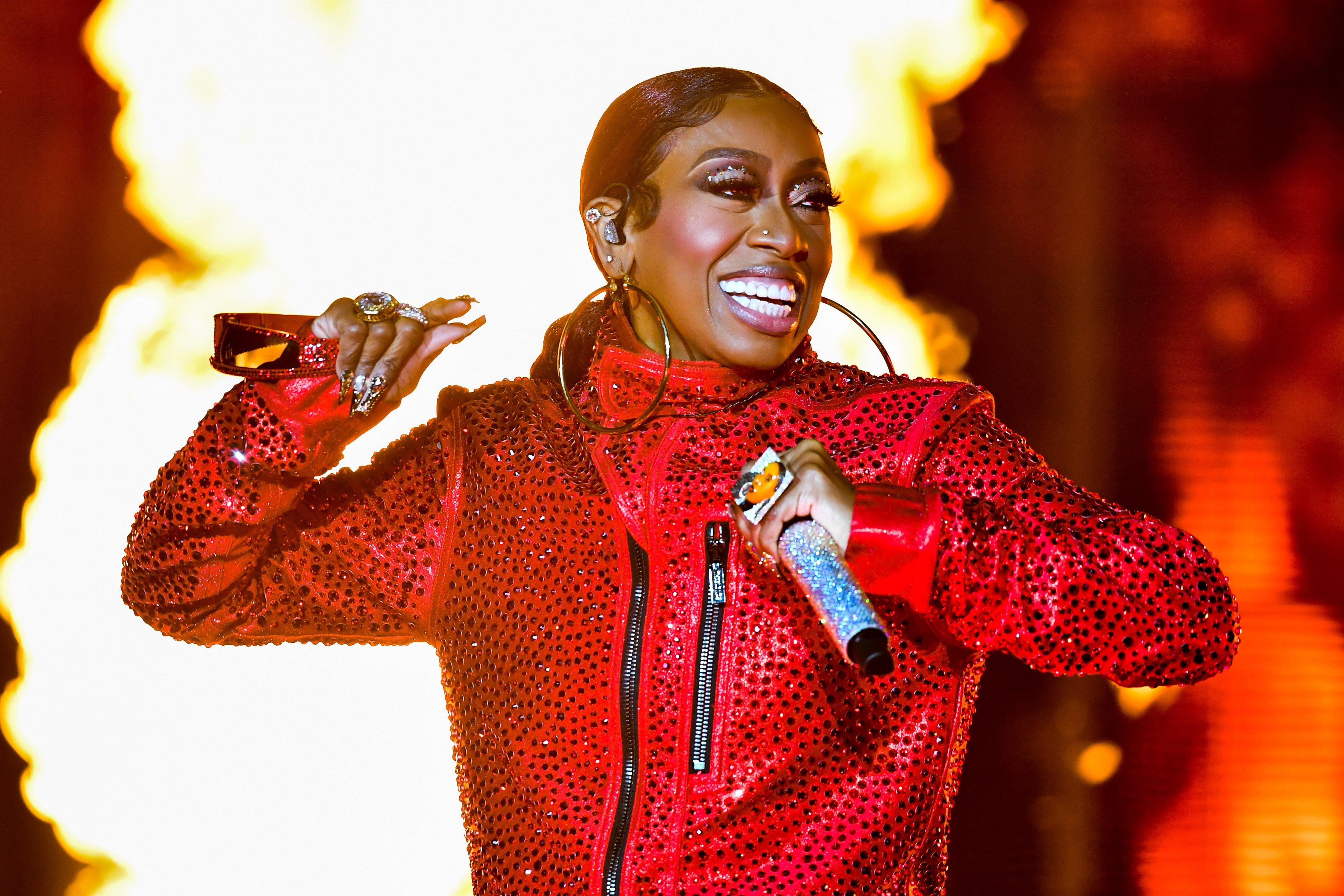
Photo: Aaron J. Thornton
interview
Celebrating Missy Elliott: How The Icon Changed The Sound, Look & Language Of Hip-Hop
In celebration of Missy Elliott's incredible legacy — and very first headlining tour, which kicks off July 4 — GRAMMY.com spoke with Missy's colleagues and collaborators for an insider’s view on what makes the four-time GRAMMY winner unique.
We’re fortunate enough to be living in the middle of a Missy Elliott resurgence — not that she ever went away.
Three decades into her groundbreaking career, Missy is readying her very first headlining tour, which begins July 4 in Vancouver, British Columbia. The Out of This World Tour runs through August and features her longtime collaborators Timbaland, Busta Rhymes, and Ciara.
The fact that it is her first headlining tour may be surprising, given that she’s been on the scene since debuting with the group Sista in the mid-1990s, and has been a chart-topping star since becoming a solo artist in 1997.
The hip-hop icon released her last full-length album, The Cookbook, nearly two decades ago but time hasn’t diminished her influence at all. In fact, we’re all still catching up to the futuristic vision that Missy and Timbaland introduced to the world in the late 1990s in their songs and videos.
Missy began her career as a member of Sista, which was a part of the Swing Mob, a musical collective working under Jodeci’s DeVanté Swing. That crew included a number of future world-changers, including Missy, Timbaland, Ginuwine, Tweet, Stevie J., and two legends who have since passed on, Magoo and Static Major. After Sista was dropped from their label, Missy, by all accounts, would have been perfectly happy to settle into a life as a songwriter and producer. But something bigger was beckoning.
Persuaded by Elektra’s Sylvia Rhone with the promise of her own label, Missy agreed to turn in one album as a solo artist. That album, 1997’s Supa Dupa Fly, made Missy not just a star but an icon, and changed the course of her life. It began a career that, over a quarter-century later, found her inducted into both the Rock and Roll Hall of Fame and the Songwriters Hall of Fame — she was the first female rapper ever to be nominated for the latter.
And that’s just the beginning of the accolades. There are the four GRAMMY wins and head-spinning 22 nominations. She was also honored alongside Dr. Dre, Lil Wayne (who has not been shy about calling Missy his favorite rapper), and the woman who gave Missy her first solo record deal, Sylvia Rhone, at 2023’s Black Music Collective’s Recording Academy Honors event. Missy was also a key participant in the GRAMMYs tribute to a half-century of hip-hop that same year.
Throughout it all, Missy has remained humble. When speaking to GRAMMY.com in 2022, she reflected on how she and longtime collaborator Timbaland had no idea of their impact at the time.
"We really just came out with a sound that we had been doing for some time, but we had no clue that it would be game changing, that we would change the cadence — the sound of what was happening at that time," she said. "No clue!"
"Her whole existence is based on moving us and influencing us," says her longtime manager Mona Scott-Young. "She wants to be able to touch people."
And that she has. To celebrate the Missy-aissance, GRAMMY.com spoke with Missy's colleagues and collaborators for an insider’s view on the course of her career and what makes the four-time GRAMMY winner unique.
The quotes and comments used in this feature were edited for clarity and brevity.
Missy’s Impact Began With Her First Guest Verse
The first time many people took note of Missy Elliott was her verse on the 1996 remix of Gina Thompson’s "That Thing You Do."
Gina Thompson (singer): I was in the process of completing my first album, Nobody Does It Better. Actually, it was complete. So what happened was, my A&R at the time, Bruce Carbone at Mercury Records, wanted to have Puffy do the remix.
Puffy was like, "We have this person that's really talented. Her name's Missy, and she used to be with the group Sista, and she's a phenomenal writer. She's working with a lot of other artists, she’s definitely the next big thing in the R&B/hip-hop world." We were like, cool.
I believe we actually heard it over the speaker phone in Bruce’s office. I know that I said that I loved it, and I felt her style was unique and different. It grew on me in a great way. I just felt like it was a smash. She definitely had added a great touch to it. I was super-excited about it.
Merlin Bobb (former Executive Vice President, Elektra Records): I was blown away by the simple fact that I knew she was a great songwriter. But when I heard her rhyming, I thought it was the most unique style that I had heard in some time.
Digital Black (former member of Playa, part of the Swing Mob): A lot of people only knew her as a writer or an R&B artist, but when she came on that Gina Thompson record with that rap, it changed everything. It allowed her to be even more herself.
Mona Scott-Young (manager): Oh my God, have you heard that song? It’s her ability to use expression and evoke emotion without even using words. She said, "He he he haw," and we all found a new way to bounce. There was something fun and magical and different that spoke to what we would come to know was this incredibly vivid imagination that would take us places sonically and visually that we didn’t even know we needed to be.
She Changed The Sound Of Hip-Hop With Her Debut LP
Missy’s first solo album, Supa Dupa Fly, came out the following year. It gave new energy to a hip-hop scene that was still reeling from the deaths of 2Pac and Biggie.
Anne Kristoff (former Vice President of PR, Elektra): She 100 percent did not want to be an artist. She's like, "I'm not an artist. I want to be Diane Warren. I'm going to write the songs. I'm going to be behind the scenes."
Merlin Bobb: I started talking to her regarding being an artist. She was totally against it. "No, I want to be a songwriter." And also, just to be honest, [Sista] had been dropped from Elektra prior to my conversations with her, so she wasn't too eager, I think, to jump back aboard.
It took about six or seven months of us discussing ways to do this. I spoke to Sylvia [Rhone, then-head of Elektra], and I said, "She's an incredible songwriter. Let's offer her a production deal or a label deal where she can not only just look at herself as an artist, but at the same time develop and nurture artists under her own banner." Sylvia thought it was a great idea.
We both talked to Missy about it, and she said, "Okay, I'll do one album." I was ecstatic because she was writing some great songs, but she also gave us her first album, which was, needless to say, a classic.
Kathy Iandoli (author, "God Save the Queens: The Essential History of Women in Hip-Hop and Baby Girl: Better Known as Aaliyah"): In God Save the Queens, I referred to her as the Andy Warhol of hip-hop, in the sense that she took the art and the cultural aspect of it, and she just put this spin and interpretation of the art that no one had ever really done prior.
With Missy’s arrival around ‘97, we were at a point in time where hip-hop was in a complete state of confusion. We did not know where it was going to go. Missy made high art hip-hop that was commercially accessible. And for that, she changed the entire game.
Gina Thompson: When she had her first project with the whole vision — not only her sound, but her songwriting style, the look — everyone was like, "This girl went out on edge. I'm gonna do a little bit of the same thing and not be so worried if I don't sound so average, what people are going to think. Because she's out on the edge doing it." And I promise you, ever since she came out, that you started hearing a lot more of female rappers tweaking their voices.
Lenny Holmes (guitarist): In hip-hop, everybody would think that it's a whole bunch of computer generated stuff. Missy Elliott does not approach it like that. She loves live instrumentation, but she likes to take bits and pieces of it. She simplifies it, and it is placed uniquely in the track at certain points. That's what makes up the structure of the song.
Mona Scott-Young: Everything from the way she looked to what she was talking about to the way she delivered that music and what she represented in terms of being nonconforming, not looking like the other female rappers of the day — I think all of those elements were the perfect lightning in a bottle. The way she rode that beat, both lyrically and with her delivery, was very, very different from everything else that we were hearing.
Read more: Revisiting 'Supa Dupa Fly' At 25: Missy Elliott Is Still Inspired By Her Debut Record
She Reinvented The Music Video
You can’t think of Missy Elliott without picturing her iconic music videos, many done in collaboration with director Hype Williams.
Brian Greenspoon (former International Publicist, Elektra): I mean, she came out of the gate wearing a garbage bag, and made it the coolest thing anyone had ever seen.
Merlin Bobb: She said, if I put out this album — initially we were talking about a single deal, but we went into an album — there’s two things very important to me: the dance aspect and the visual aspect.
Kathy Iandoli: The thing that I really loved about Missy's music videos, she was a big budget music video person. She got the men's music video budget.
Anne Kristoff: When you think about the "Rain" video — I'm just guessing, I don't want to put words in her mouth — but I think when she saw that the vision in her head could become real out in the world, that anything she could think of could happen, that maybe it made it a little more fun for her to be an artist. I hope.
Digital Black: Missy is one of the funniest people you’ll ever meet. People maybe don't know. She loves joking. So that was just her being her.
Gina Thompson: You started seeing a lot of people doing certain robotic-type images or moves in their videos to almost mimic her "Supa Dupa Fly." She’s the creator of that.
Earl Baskerville (manager/producer): Missy would get with the director, and she would sit there and go over the whole treatment. A lot of the visuals came from her. She was very hands on. Today, you can shoot a video in four or five hours. But Missy’s video shoots was so long, I used to hate it. We would be there fifteen hours for a three minute video!
She Was Avant-Garde But Still Pop
Missy’s musical and visual style was like nothing anyone had ever seen. Yet she still became a star. How did she manage to be both innovative and accessible?
Kathy Iandoli: You can't make something that the general public can't access, or speak over their heads.
Digital Black: Even if you said it sounded weird, it still had some soulfulness to it. I think that was what allowed her to touch so many different people.
Merlin Bobb: When you have an artist that stands out, but it doesn't go over your head musically, artistically, lyrically, then it works. People, when they heard and experienced something new and fresh that was easy to digest, but it was unique, they gravitated to it.
Brian Greenspoon: How was it sold to a mass audience? I mean, the sound was breakthrough. What Timbaland was doing with drum sounds, and the way they were building these very sparse rhythms and sound beds, they were breaking ground. But the thing that worked is that they had these incredible songs that Missy was writing and that she had these incredible featured artists on.
Gina Thompson: To try to figure out what her brain is doing, I’ve been gave that up.
Earl Baskerville: Nobody could figure out what we were doing, because they couldn’t understand the sound.
Lenny Holmes: Her rhythmic style of how she would do the vocals was just unheard of. Like, doubling up accents. The things that she started doing — you would hear a deejay do a scratch on a record. You would not hear a singer do it. I was like, What in the world?
Anne Kristoff: She was doing these really creative things that no one else was doing visually. And the sound was different than whatever everyone else was doing. So it wasn't a hard sell for the press.
She Was A Master At Working With Other Artists
Missy was far more than just a solo star. All throughout her career, she continued her first love: writing and producing for other artists — including Ciara, Aaliyah, Destiny’s Child, and Whitney Houston.
Lenny Holmes: Missy had a great relationship with singers and rappers, because she could do both. A lot of people don’t know, but Missy can sing. So when we worked with groups that had singing parts on them, a lot of times she would go ahead and lay down the guide track for the actual artist to sing.
Kathy Iandoli: Missy just really understood the artists that she worked with. She saw their strengths, and she helped them utilize them to the best of their capabilities.
Angelique Miles (former music publishing executive): She was able to relate to the artist and express that artist. She was able to customize and express that artist's story. Whatever she wrote for 702 didn’t sound like what she wrote for Whitney Houston.
Digital Black: She was good at listening to the artist, seeing what they do, and then, how can you enhance what they do well? Those are the best records. She was great at tailor-making records for people, just from her doing her due diligence on learning who the artist is. Not just going in, "I’m Missy, I can write whatever." I'm gonna write something specifically for you that enhances what you’ve already done.
Merlin Bobb: She would have made an incredible A&R person. I would have hired her back then. She was able to come up with lyrics and melodies and songs and chords and production that to me stood out. She worked with both male and female artists. She really knew how to get an artist not only to sing a great song, but to sing very uniquely and in their own way, because she was a great vocal production coach.
Mona Scott-Young: She's always listening beyond what we hear. Even if there's a song an artist has [that she’s not involved with], she'll say, "Yeah, I would have done this thing differently with this artist. Because if you listen to what she did on this one part of the song, you can hear that there's more range there. But for some reason they didn't push her to go there." That to me is just one of the things that makes her such a great producer and star finder, because she always is looking for what more they can do and how they can challenge themselves to be better.
Earl Baskerville: She had signed an artist that I used to manage named Mocha. And she told Mocha to go in there and just rap. I think Mocha might have did 30-something bars, 60 bars. know. Missy listened to all of the stuff she did, took it, and dissected it. She went in there and took eight bars, not from the beginning of the track — I don’t know where she found it, in the middle or something — and put it on the Nicole Wray record "Make It Hot." When Mocha comes in, that’s actually the middle of the verse somewhere! That was crazy to me.
Her First Love Was Always Songwriting
Through it all, Missy’s strength remained (and remains) her songwriting. But what makes her songs stand out, and stand the test of time?
Earl Baskerville: Missy didn’t want to be an artist. She just wanted to be a songwriter.
Merlin Bobb: Her songwriting was very soulful, but it also had great melodic edge to it. They’re very realistic lyrics to a young scene that was happening in R&B and hip-hop at the time. So it was somewhat of a fusion of R&B and hip-hop lyrically, and she just had a very strong sense of melody and great hook lines.
Mona Scott-Young: She wasn't talking about the same thing that we were hearing from a lot of the other females in the genre at the time — overt sexuality and material possessions and that kind of stuff. She was engaging, having a good time lyrically, and holding her own with her male counterparts.
She was giving us music that was great, and it didn't matter that it was coming from a female. She was kind of this androgynous being that was delivering great music. You listen to the song, you just want to party.
Read more: Missy Elliott Makes History As First Female Rapper Nominated For Songwriters Hall Of Fame
She Changed The Artists Who Came After Her
As with all major innovations, it didn’t take long after Missy broke big for her influence to be felt.
Kathy Iandoli: The special relationship between Aaliyah, Missy, and Timbaland was the fact that together they all created a new sound that would set the standard of hip-hop and what we now define as alt-R&B. They invented a new subgenre. It was something that Missy was able to continue along and then create a sound on her own terms.
Gina Thompson: Many people were trying to emulate her whole different style.
Lenny Holmes: [Were people copying her?] Most definitely. But there's only one Missy. And I got to say, there’s only one Timbaland too. You hear that trademark voice or the trademark lick, and you just know that's them.
Brian Greenspoon: I think she influenced just about everybody that came after her. The sound of hip-hop changed after her and Timbaland dropped that music. The way the people produced their drum sounds and their beats, the use of hi hats, it all changed based on Missy and Timbaland.
Merlin Bobb: Most hip-hop/R&B collaborations at that time were hip-hop records with vocal hooks from R&B artists. She kind of flipped it, where she worked from the R&B side and made the vocals and the production more hip-hop friendly.
Mona Scott-Young: Her whole existence is based on moving us and influencing us. She wants to be able to touch people. So when we see artists who you can hear or see the influence, then you know that she's done her job.
There's so many artists — Flyana Boss, a little bit Cardi, a little bit Nicki. They all, I think, have been influenced by Missy, her look, her sound, in one way, shape or form. And that is the greatest compliment, to inspire a generation and see them take what you've done to another level. But then she's constantly also evolving and keeping everyone on their toes.
Learn more: 8 Ways Aaliyah Empowered A Generation Of Female R&B Stars
Considering Missy And Her Legacy
Everyone interviewed for this piece had so much love for Missy. Here’s a small sample.
Brian Greenspoon: Missy is one of the most professional, talented, creative artists I've ever had the luck to work with. I'm happy to see that she is being recognized for being the icon that we all saw that she was becoming back then.
Lenny Holmes: Even today, in whatever we're doing, we use what we've learned from Missy Elliott. It’s mixed in whatever we do. It’s amazing what she has done for herself, but she has definitely helped people along the way, and we will forever be grateful to her.
Digital Black: She's a one-of-one, God-given talent. She earned every award, every accolade, accomplishment. Her work ethic was phenomenal, and nothing was given. Big sis earned everything, and I just want to say I love her, and it's been a pleasure and an honor to be a part of her career.
Kathy Iandoli: There’s so much of the art that we have right now that we have to thank her for.
Mona Scott-Young: This has been an incredible journey. I always talk about being incredibly blessed to have had the opportunity to play a role when you have somebody like her who has touched so many people globally and whose music and entire presence hold this special place in fans’ hearts.
Every day it's just about, how do we continue to push forth, break boundaries, challenge ourselves to do things bigger and better than we did it the last go round.
Explore The Artists Who Changed Hip-Hop
50 Artists Who Changed Rap: Jay-Z, The Notorious B.I.G., Dr. Dre, Nicki Minaj, Kendrick Lamar, Eminem & More
Hip-Hop Just Rang In 50 Years As A Genre. What Will Its Next 50 Years Look Like?

Watch Outkast Humbly Win Album Of The Year For 'Speakerboxxx/The Love Below' In 2004 | GRAMMY Rewind
A Brief History Of Hip-Hop At 50: Rap's Evolution From A Bronx Party To The GRAMMY Stage
GRAMMY Museum To Celebrate 50 Years Of Hip-Hop With 'Hip-Hop America: The Mixtape Exhibit' Opening Oct. 7

Watch Eminem Show Love to Detroit And Rihanna During Best Rap Album Win In 2011 | GRAMMY Rewind
Listen To GRAMMY.com's 50th Anniversary Of Hip-Hop Playlist: 50 Songs That Show The Genre's Evolution
14 New Female Hip-Hop Artists To Know In 2023: Lil Simz, Ice Spice, Babyxsosa & More
6 Artists Expanding The Boundaries Of Hip-Hop In 2023: Lil Yachty, McKinley Dixon, Princess Nokia & More
Watch 41 Bring The Hype With A Cover Of DMX's Hit "Party Up (Up In Here)" | Hip-Hop Re:Defined
The 10 Most Controversial Samples In Hip-Hop History

Watch Lauryn Hill Win Best New Artist At The 1999 GRAMMYs | GRAMMY Rewind
19 Concerts And Events Celebrating The 50th Anniversary Of Hip-Hop
Founding Father DJ Kool Herc & First Lady Cindy Campbell Celebrate Hip-Hop’s 50th Anniversary
A Guide To New York Hip-Hop: Unpacking The Sound Of Rap's Birthplace From The Bronx To Staten Island
A Guide To Southern California Hip-Hop: Definitive Releases, Artists & Subgenres From L.A. & Beyond
10 Crucial Hip-Hop Albums Turning 30 In 2023: 'Enter The Wu-Tang,' 'DoggyStyle,' 'Buhloone Mindstate' & More
The Nicki Minaj Essentials: 15 Singles To Showcase Her Rap And Pop Versatility
11 Hip-Hop Subgenres To Know: From Jersey Club To G-Funk And Drill
5 Essential Hip-Hop Releases From The 2020s: Drake, Lil Baby, Ice Spice, 21 Savage & More
A Guide To Southern Hip-Hop: Definitive Releases, Artists & Subgenres From The Dirty South
A Guide To Bay Area Hip-Hop: Definitive Releases, Artists & Subgenres From Northern California
A Guide To Texas Hip-Hop: Definitive Releases, Artists & Events

Ludacris Dedicates 2007 Best Rap Album GRAMMY To His Dad | GRAMMY Rewind
Unearthing 'Diamonds': Lil Peep Collaborator ILoveMakonnen Shares The Story Behind Their Long-Awaited Album
10 Bingeworthy Hip-Hop Podcasts: From "Caresha Please" To "Trapital"
Revisiting 'The Miseducation Of Lauryn Hill': Why The Multiple GRAMMY-Winning Record Is Still Everything 25 Years Later
Watch Asha Imuno Personalize Kendrick Lamar's "i" With A Sparkling New Chorus | Hip-Hop Re:Defined
10 Must-See Exhibitions And Activations Celebrating The 50th Anniversary Of Hip-Hop
5 Artists Showing The Future Of AAPI Representation In Rap: Audrey Nuna, TiaCorine & More
'Invasion of Privacy' Turns 5: How Cardi B's Bold Debut Album Redefined Millennial Hip-Hop
10 Songs That Show Doja Cat’s Rap Skills: From "Vegas" To "Tia Tamara" & "Rules"
Watch Olen Put A Dreamy, Melodic Spin On Childish Gambino's "Heartbeat" | Hip-Hop Re:Defined
6 Must-Watch Hip-Hop Documentaries: 'Hip-Hop x Siempre,' 'My Mic Sounds Nice' & More...
Essential Hip-Hop Releases From The 2010s: Ye, Cardi B, Kendrick Lamar & More
6 Takeaways From Netflix's "Ladies First: A Story Of Women In Hip-Hop"
How Drake & 21 Savage Became Rap's In-Demand Duo: A Timeline Of Their Friendship, Collabs, Lawsuits And More
5 Takeaways From Travis Scott's New Album 'UTOPIA'
Essential Hip-Hop Releases From The 2000s: T.I., Lil Wayne, Kid Cudi & More
Songbook: How Jay-Z Created The 'Blueprint' For Rap's Greatest Of All Time
Ladies First: 10 Essential Albums By Female Rappers

How Megan Thee Stallion Turned Viral Fame Into A GRAMMY-Winning Rap Career | Black Sounds Beautiful
How Hip-Hop Took Over The 2023 GRAMMYs, From The Golden Anniversary To 'God Did'
5 Things We Learned At "An Evening With Chuck D" At The GRAMMY Museum
Remembering De La Soul’s David Jolicoeur, a.k.a. Dave and Trugoy the Dove: 5 Essential Tracks
Catching Up With Hank Shocklee: From Architecting The Sound Of Public Enemy To Pop Hits & The Silver Screen
Meet The First-Time GRAMMY Nominee: GloRilla On Bonding with Cardi B, How Faith And Manifestation Helped Her Achieve Success
Hip-Hop's Secret Weapon: Producer Boi-1da On Working With Kendrick, Staying Humble And Doing The Unorthodox
Essential Hip-Hop Releases From The 1990s: Snoop Dogg, Digable Planets, Jay-Z & More
10 Albums That Showcase The Deep Connection Between Hip-Hop And Jazz: De La Soul, A Tribe Called Quest, Kendrick Lamar & More
Hip-Hop Education: How 50 Years Of Music & Culture Impact Curricula Worldwide
Women In Hip-Hop: 7 Trailblazers Whose Behind-The-Scenes Efforts Define The Culture

Watch Flavor Flav Crash Young MC's Speech After "Bust A Move" Wins In 1990 | GRAMMY Rewind
Essential Hip-Hop Releases From The 1980s: Slick Rick, RUN-D.M.C., De La Soul & More
Lighters Up! 10 Essential Reggae Hip-Hop Fusions

How Lil Nas X Turned The Industry On Its Head With "Old Town Road" & Beyond | Black Sounds Beautiful
9 Teen Girls Who Built Hip-Hop: Roxanne Shante, J.J. Fadd, Angie Martinez & More
Essential Hip-Hop Releases From The 1970s: Kurtis Blow, Grandmaster Flash, Sugarhill Gang & More
Killer Mike Says His New Album, 'Michael,' Is "Like A Prodigal Son Coming Home"
5 Takeaways From 'TLC Forever': Left-Eye's Misunderstood Reputation, Chilli's Motherhood Revelation, T-Boz's Health Struggles & More
Watch Eva B Perform "Sunrise In Lyari" Through The Streets Of Pakistan | Global Spin


